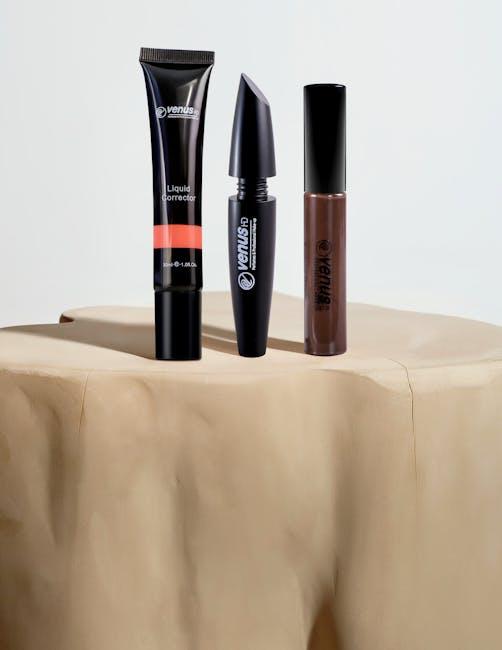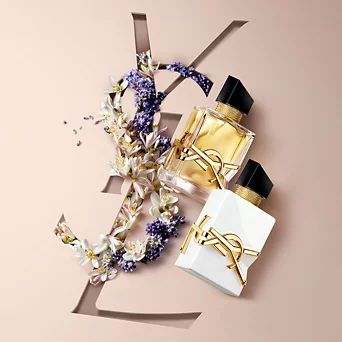How Well Do Color Correctors Work? Testing Different Shades and Formulas
In the vibrant realm of cosmetics, where colors dance and hues harmonize, color correctors have emerged as an indispensable tool for many beauty enthusiasts and professionals alike. Designed to neutralize imperfections and elevate the canvas of our skin, these versatile creams and concealers promise to transform our looks with just a few strategic strokes. But do thay truly live up to the hype? in this exploration, we delve into the world of color correction, examining the efficacy of various shades and formulas. From the subtle green tones aimed at banishing redness to the peachy hues that brighten dark undertones, our journey will shed light on the science behind these color wheel wonders. Join us as we put these pigments to the test, uncovering what works, what doesn’t, and how to achieve that flawless finish many aspire to attain.
Exploring the Science Behind Color Correction Effects
The science of color correction is rooted in the color wheel and the principles of color theory. Each color can counteract specific tonal imbalances; as an example, green neutralizes red undertones, while purple counters yellow. These principles allow makeup artists and enthusiasts alike to achieve a balanced complexion, functioning almost like a painter mixing colors.Understanding the optical effects of each shade is crucial when selecting a color corrector. A product’s texture and formula—be it cream, liquid, or powder—play significant roles in not just the application but also in how well they adhere to the skin and blend with the foundation.
When testing various color correctors, it’s important to consider the nuances of each formula, as the interplay of shade and texture can yield wildly different results. Conducting side-by-side comparisons can clarify which products perform best for specific skin concerns. As a notable example, individuals looking to diminish dark circles may find greater success with a peach or orange shade, while those aiming to cover redness might prefer a yellow or green option. Below is a quick overview table of common color correctors, their intended effects, and ideal skin concerns:
| Color | Effect | Ideal for |
|---|---|---|
| Green | Neutralizes redness | Acne, rosacea |
| Yellow | Brightens and evens out skin tone | Dark spots, dullness |
| Peach/Orange | Brightens dull skin, counteracts dark circles | Dark circles, hyperpigmentation |
| Purple | Neutralizes yellow tones | Jaundice, sallow skin |
| Pink | Brightens dull complexion | All skin tones for luminosity |

A Deep Dive into different Shades: What Works Best for Your Needs
Color correctors are not one-size-fits-all; their effectiveness largely hinges on understanding the nuances of color theory and how different shades interact with your unique skin tone. Some common shades and their purposes include:
- Green: Neutralizes redness, making it ideal for blemishes or rosacea.
- Peach: Great for countering blue undertones, effectively brightening under-eye circles.
- Lavender: Excellent for reducing yellow or sallow undertones, giving skin a more vibrant look.
- Yellow: Perfect for counteracting purple tones, especially dark under-eye bags.
When selecting a color corrector, consider not only the shade but also the formula. Cream-based correctors often offer better coverage and blendability for dry skin types, whereas liquid formulations may suit those with oilier complexions. To aid in your decision-making, take a look at the following comparison table that outlines various formulas and their best-suited skin types:
| Formula | Best For |
|---|---|
| cream | Dry to normal skin |
| Liquid | Oily skin |
| Stick | Targeted application |
| Pencil | Precision & portability |

Formulas Matter: Creams, Liquids, and Sticks Compared
When exploring the world of color correctors, the distinction between creams, liquids, and sticks emerges as a pivotal aspect that can influence performance. cream formulas are generally thicker and offer more coverage, making them ideal for targeted application on stubborn imperfections. They blend well into the skin but may require a delicate touch to avoid a cakey appearance. Liquids, on the other hand, provide a lightweight feel that’s easily buildable, allowing for smooth layering without overwhelming the skin. This versatility makes them suitable for broader areas or subtle correction, but they might necessitate more frequent touch-ups throughout the day. sticks present a unique middle ground,presenting an easy-to-use format for quick fixes on the go,tho they may sometimes lack the blendability of their creamy counterparts.
When evaluating the efficacy of each formula, it’s essential to consider skin type and personal preference. Here’s a quick reference of each type based on key attributes:
| Formula Type | Coverage | Consistency | Best For |
|---|---|---|---|
| Cream | High | Thick | Stubborn blemishes |
| Liquid | Medium | Fluid | Subtle corrections |
| stick | Medium-High | Solid | On-the-go applications |

Expert Tips for Mastering Color Correction Techniques
To achieve flawless results in color correction,it’s essential to understand the basics of color theory. contrasting hues can neutralize unwanted tones effectively, while complementary shades create balance.Here are some key concepts to keep in mind:
- Understanding Undertones: Identify whether your skin has warm, cool, or neutral undertones to select appropriate correctors.
- Layering Techniques: Apply correctors in thin layers, building up coverage gradually for a more natural finish.
- Tools Matter: Use a damp beauty sponge or a fine brush for seamless blending.
Experimenting with different formulas can greatly affect the final look. Creams, liquids, and sticks all react differently on the skin, offering various levels of pigmentation and texture. Consider the following to find your perfect match:
| Formula Type | Best For | Key Benefits |
|---|---|---|
| Cream | Dry Skin | Hydrating and easy to blend |
| Liquid | Oily Skin | Lightweight and buildable |
| Stick | Travel-Pleasant | Convenient and precise application |
Wrapping Up
In a world where the quest for a flawless complexion often leads us down countless beauty aisles, color correctors stand out as an intriguing ally. our exploration into the effectiveness of various shades and formulas reveals a nuanced landscape, where some hues effectively neutralize redness, while others illuminate shadows born of fatigue.the results of our testing illuminate not just the potency of these products, but also the beauty of individual expression and personal preference in makeup application.
As we conclude our journey through the kaleidoscope of color correctors, remember that the ultimate goal is to find what works best for you. Armed with the insights from our tests, you can navigate the colorful terrain with greater confidence and finesse. Whether you choose to embrace a vibrant peach,a calming green,or a soft lavender,the right color corrector can transform not just your complexion,but your entire makeup experience.So venture forth, fellow beauty enthusiasts. Experiment, combine, and let your uniqueness shine through every carefully chosen layer. After all, makeup is as much about art as it is about enhancing the beauty that is inherently yours. Happy correcting!



